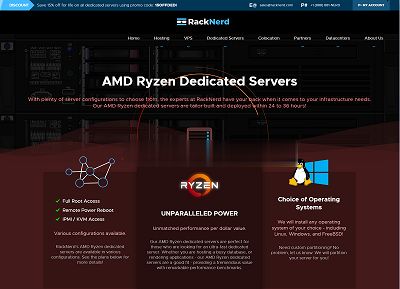WebWandererHow Is My Web Community Developing Monitoring Trends In Web…
How Is MyWeb Community Developing?Monitoring Trends In Web Service
Provision
Brian Kelly,UK Web Focus and Ian Peacock,WebWatch
UK Office for Library and Information Networking,University of Bath,Bath,BA27AY,UK
E-mail: b.kelly@ukoln.ac.uk i.peacock@ukoln.ac.uk
Phone: +441225323943 +441225323570
F ax:+441225826838
Abstract
As the World Wide Web continues its tremendous rate of development,providers ofservices on the Web have dificult decisions to make regarding the deployment of newtechnologies:should they begin deployment of technologies such as HTML 4.0,CSS 2,Java,Dublin Core metadata, etc.,or should they wait until the technologies mature. Thispaper describes the use of a web auditing/profiling robot utility known as Web Watchwhich can help serviceproviders byproviding information on the uptake of technologieswithin particular communities.A description of use of the WebWatch software within theUK Higher Education community is given, together with a discussion of thefindings.Introduction
The Beleaguered Webmaster
In the early days of the web life was easy for the webmaster, to use the popular, ifpolitically-incorrect term.A simple text editor(typically vi or emacs for the Unix user orNotepad for the Windows users)or simple HTML authoring tool would suffice forcreating web pages.Add a graphical tool for creating and editing images,and thewebmaster could create a website which could make use of most of the web technologieswhich were widely deployed in around 1994.
These days,however, life is much more difficult. Competition between the browsersoftware vendors has hastened the development of a wide range ofweb technologies,much o f which, sadly,appears to suffer from interoperab ility prob lems. The webstandards community,principally the World Wide Web Consortium,has developed arange of new or updated web protocols (see article by Brian Kelly elsewhere in thisedition of the Journal ofDocumentation)although,again, there are reports ofimp lementation prob lems.
HowIsMyWebCommunityDeveloping?MonitoringTrends InWeb ServiceProvision 1
As the web becomes increasingly used to support core business functions, rather thansimply as a noticeboard managed by enthusiasts in the IT department, the webmasterfaces pressures to begin deployment of new technologies.He,and the webmaster is oftenmale, is often not in a position to say no and point out deployment and interoperabilityprob lems.
Web Monitoring Tools
Web auditing and monitoring tools can assist the beleaguered webmaster by providinginformation on the uptake of web technologies. Such tools can provide evidence on howwidely deployed particular technologies are and how they are used. This information is,of course,of use to a number of communities such as policy-makers, funders, softwaredeve lopers,e tc.
In this paper the authors describe the use of a web monitoring tool based on web robotsoftware which can be used freely on the Web without any special authorisation.Adescription of the robot software which has been developed by the authors is given. Thepaper then reports on the use of the tools within one particular community–UK HigherEducation–and interprets the results. The paper concludes by describing other ways inwhich web monitoring tools can be used.
Robot Software
Background
How big is the Web?C learly in order to answer this question automated software mustbe used.
In 1993 the first attempt to answer the question was made. The World Wide WebWanderer(WWWW)web robot wa s deve loped a s an automate d too l to automaticallyfollow links on web pages in order to count the total number of resources to be found onthe Web. In June 1993 the robot detected 130 web sites,which had grown to over 10,000by December 1994 and 100,000 by January 1996[1].
Since this initial survey was started,a number of other trawls have been carried out,although,due to the current size of the web, trawls of the entire Web tend nowadays to becarried out by large organisations which have the required disk and server capacity. TheOpen Text Corporation’s trawl reported by Tim Bray at the WWW 5 conference[2]indicated that by November 1995 there were over 11 million unique URLs and over223,000 unique web servers.
Robot Software
The World Wide Web Wanderer and the Open Text Spider are examples of web robots.A web robot can be regarded as an automated browser,which will sequentially retrieve
HowIsMyWebCommunityDeveloping?MonitoringTrends InWeb ServiceProvision 2
web resources.Unlike a browser,however,a robot is not designed to retrieve resourcesfor viewing.Robots typically retrieve web resources for auditing purposes,as describedabove, for indexing or for checking(such as robot software to detect broken links).The current generation of web crawlers is large.A glance at the Web Robots Pages [3]reveals a list ofover 160 well-known robots. These robots are used for a variety ofpurposes including auditing and statistics (such as the Tcl W3 Robot [4]and the RBSESpider[5]), indexing(the NWI Robot [6]and Harvest [7]),maintenance(Checkbot [8]and LinkWalker [9])and mirroring(Temp leton[10]).
Robot so ftware can b e regarded as automated web browsers.A potential problem withrobot software is the danger of causing server or network overload by requesting toomany resources in a short space of time. In order to overcome this problem the RobotExclusion Protocol [11]has been developed. This is a method that allows webadministrators to indicate to robots which parts of their site the robots should not visit.The WebWatch Project
Background
The WebWatch project is funded by the BLRIC(the British Library Research andInnovation Centre). The project is based at UKOLN,University of Bath. The aims ofthe WebWatch project are:
To develop robot software to gather information on usage of web technologieswithin a number of communities within the UK.
To use the so ftware to collect the data.
To develop(if appropriate)and use analysis tools to provide statistical analyses ofthe data.
To produce reports explaining the analyses.
To make recommendations to appropriate bodies on the information collected.
To publicise reports to relevant communities.
The WebWatch project began in August 1997.
WebWatch RobotSoftware
Following an initial survey of robot software it was decided to make use of the Harvestsoftware.Harvest [12] is a software suite which is widely used within the worldwideresearch distributed indexing community.A slightly modified version o f the so ftware
HowIsMyWebCommunityDeveloping?MonitoringTrends InWeb ServiceProvision 3
was used in the initial WebWatch trawl carried out in October 1997 across UK publiclibrary web s ites [13].
Once the data for this community and a number of other small trawls had been collectedand analysed it became apparent that Harvest was very limited as an auditing robot.As ithad been designed for indexing web resources, it did not allow non-textual resources,such as images, to be downloaded.Also as it processed the file suffix for web resources,rather than Internet MIME types, it was not possible to analyse resources by MIME types.In the light of these limitations and the difficulties found in extending Harvest it wasdesigned to write our own WebWatch robot which would be designed for auditingpurposes.
The current version of the WebWatch robot is written in perl5 and builds on previousvers ions.
Survey of UK Higher Education Entry Pages
In October 1997 a WebWatch trawl of UK University entry pages was carried out. Thetrawl was repeated on 31 July 1998(which terminated on 2 August). The initial resultshave been published elsewhere[14]. In this paper we give a brief summary ofthe originalsurvey,a more detailed report ofthe second trawl and a comparison between the twotraw l s.
Initial Trawl of UK Universities
The initial trawl of UK University entry pages began on the evening ofFriday 24thOctober 1997. The WebWatch robot analysed the institutional web entry point for UKUniversities and Colleges as defined in the HESA list [15]. This list contained the entrypoints for 164 institutions.The WebWatch robot successfully trawled 158 institutions.Six institutional home pages could not be accessed,due to server problems,networkproblems or errors in the input data file.
Second Trawl of UK Universities
The second trawl of UK University entry points was initiated on the evening ofFriday 31July 1998. This time the NISS list of Higher Education Universities and Colleges [17]was used for initial trawl. This file contains 170 institutions.The WebWatch robotsuccessfully trawled 149 institutions.Twenty-one institutional home pages could not beaccessed,due to server problems,network problems, restrictions imposed by the robotexclusion protocols or errors in the input data file.
A total of59 sites had robots.txt files.Of these, two sites (Edinburgh andLiverpool universities)prohibited access to most robots.As these sites were not trawledthey are excluded from most of the summaries.However details about the serverconfiguration is included in the summaries.
HowIsMyWebCommunityDeveloping?MonitoringTrends InWeb ServiceProvision 4
Note that when manually analysing outliers in the data it was sometimes found thatinformation could be obtained which was not available in the data collected by the robot.A brief summary of the findings is given below.More detailed commentary is given laterin this article.
Table 1 Table of Server Usage
HowIsMyWebCommunityDeveloping?MonitoringTrends InWeb ServiceProvision 5
As can be seen from Table 1 the Apache server has grown in popularity. This has beenmainly at the expense of the NCSA and CERN servers,which are now very dated and nolonger being developed. In addition a number of servers appear to be no longer in usewithin the community(e.g.Purveyor and WebS ite).Microsoft’s server has also grown inpopularity.
The popularity of Apache is also shown in the August 1998 Netcraft Web Server Survey
[16],which finds Apache to be the most widely used server followed by Microsoft-IISand Netscape-Enterprise.The Netcraft surveys are taken over a wider community thanthe academic sites looked at in this paper.The community surveyed by Netcraft is likelyto consist of more diverse platforms (such as PCs)whereas academic sites show a biastowards Unix systems.This may explain the differences in the results of the next mostpopular servers.
Table 2 shows a profile of HTTP headers.
Table 2 HTTP Headers
Note that this information was not collected for the first trawl due to limitations in therobot so ftware.
In Table 2 a resource is defined as cachable if:
It contains an Expi res header showing that the resource has not expired
It contains a La s t-Modif i ed header with a modification date greater than 1day prior to the robot trawl.
Itcontains the Cache-control: public header
A resource is defined as not cachable if:
It contains an Expi res header showing that the resource has expired
It contains a La s t-Modif i ed header with a modification date coinciding withthe day ofthe robot trawl
HowIsMyWebCommunityDeveloping?MonitoringTrends InWeb ServiceProvision 6
Itcontains the Cache-control: no-cache orCache-control: no-s t or e headers
It contains the Pragma: nocache header
The cachability of resources was not determined if the resource used the E t ag HTTP/1.1header, since this would require additional testing at the time of the trawl which was notcarried out.
Figure 1 gives a histogram of the total size of the institutional entry point.
1 1 1 1 1 1 1 1 1 1
Total size of entry point (Kb)
Figure 1 Size of Entry Point
As shown in Figure 1, four institutions appear to have an institutional web page which isless than 5Kbytes. The mean size is 41 Kb,with a mode of 10-20 Kb. The largest entrypoint is 193 Kbyes.
Note that this information is based on the size of the HTML file,any framed or refreshHTML pages, inline images and embedded Java applets.
HowIsMyWebCommunityDeveloping?MonitoringTrends InWeb ServiceProvision 7
It does not include any background images, since the current version ofthe robot does notparse the<BODY>element for the BACKGROUND attribute. Subsequent analysis showedthat 56 institutions used the BACKGROUND attribute in the<BODY>element.Althoughthis would increase the file size, it is unlikely to do so significantly as backgroundelements are typically small files.
The histogram also does not include any linked style sheet files. The WebWatch robotdoes not parse the HTML document for linked style sheets. In this the robot can beregarded as emulating a Netscape 3 browser.
Figure 2 gives a histogram for the number of images on the institutional entry point.Asmentioned previously this does not include any background images.
Figure 2 Numbers of Images
Figure 3 gives a histogram for the number of hypertext links from institutional entryp o ints.
HowIsMyWebCommunityDeveloping?MonitoringTrends InWeb ServiceProvision 8
#Hyperl ink elements per page
Figure 3 Link Profiles.
Note that F igure 3 gives the total number o f links which were found. This include s<A>elements and client-side image map s.Note that typically links in client-side maps areduplicated using the<A>element.No attempt has been made in this report to count thenumb er o f unique links.
Discussion of Findings
In this section we discuss the findings of the trawls.
The discussion covers the accessibility of the pages and the technologies used. In theaccessibility discussion we consider factors relevant to users accessing the pages,including the files sizes (which affects download times),whether the pages can be cached(which also affects download times)and the usage of hyperlinks (which can affect theusability). In the technology discussion we consider the technologies used, such as serverhardware and software,and web technologies such as use ofJavaScript and Java,metadata and styleshe ets.
HowIsMyWebCommunityDeveloping?MonitoringTrends InWeb ServiceProvision 9
- WebWandererHow Is My Web Community Developing Monitoring Trends In Web…相关文档
- periodPERIODIC TABLE TRENDS - SCHOOLinSITES Web hosting …元素周期表的趋势schoolinsites网页寄存…
- PCTechnological Trends of Distance Learning From Web-Based to WAP-Based
- 网页Mobile Web Design Trends and Best Practices
- higherPeriodic Trends Worksheet - Faculty Access for the Web
- specificInventory- likely to be underestimated three interesting web design trends
- demonstrateGrowing Trends article - NYSTA Web Site
iON Cloud七月促销适合稳定不折腾的用户,云服务器新购半年付8.5折,洛杉矶/圣何塞CN2 GT线路,可选Windows系统
iON Cloud怎么样?iON Cloud今天发布了7月份优惠,使用优惠码:VC4VF8RHFL,新购指定型号VPS半年付或以上可享八五折!iON的云服务器包括美国洛杉矶、美国圣何塞(包含了优化线路、CN2 GIA线路)、新加坡(CN2 GIA线路、PCCW线路、移动CMI线路)这几个机房或者线路可供选择,有Linux和Windows系统之分,整体来说针对中国的优化是非常明显的,机器稳定可靠,比...

青云互联:美国洛杉矶CN2弹性云限时八折,15元/月起,可选Windows/可自定义配置
青云互联怎么样?青云互联是一家成立于2020年6月的主机服务商,致力于为用户提供高性价比稳定快速的主机托管服务,目前提供有美国免费主机、香港主机、香港服务器、美国云服务器,让您的网站高速、稳定运行。美国cn2弹性云主机限时8折起,可选1-20个IP,仅15元/月起,附8折优惠码使用!点击进入:青云互联官方网站地址青云互联优惠码:八折优惠码:ltY8sHMh (续费同价)青云互联活动方案:美国洛杉矶...

racknerd:美国大硬盘服务器,$599/月,Ryzen7-3700X/32G内存/120gSSD+192T hdd
racknerd当前对美国犹他州数据中心的大硬盘服务器(存储服务器)进行低价促销,价格跌破眼镜啊。提供AMD和Intel两个选择,默认32G内存,120G SSD系统盘,12个16T HDD做数据盘,接入1Gbps带宽,每个月默认给100T流量,5个IPv4... 官方网站:https://www.racknerd.com 加密数字货币、信用卡、PayPal、支付宝、银联(卡),可以付款! ...

-
天玑1000plus和骁龙865哪个好CPU型号 MediaTek MT6853 5G,和天玑1000+哪个好?苹果x和xr哪个好苹果x和xr哪个好?有何区别?法兰绒和珊瑚绒哪个好请问天鹅绒法兰绒和珊瑚绒哪个好啊 想买套床上用品苹果手机助手哪个好最新版iphone助手 PP助手好用吗?核芯显卡与独立显卡哪个好核芯显卡与独立显卡哪个好美国国际集团IDG在美国是干什么的?美国国际集团全球500强有哪些企业是美国的美国国际东西方大学现在去哪国留学最有前途?qq空间登录电脑怎么用电脑登陆手机版QQ空间如何增加百度收录如何提高百度收录率?